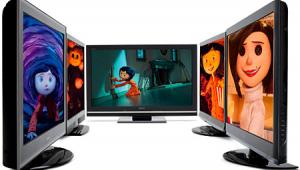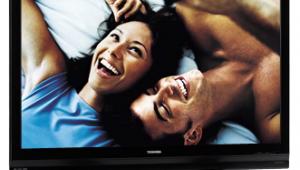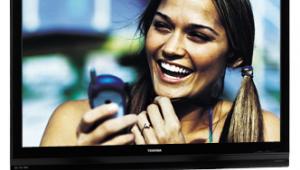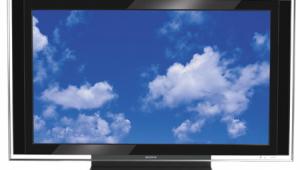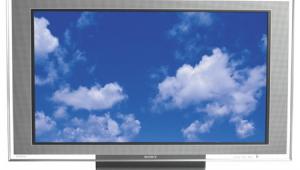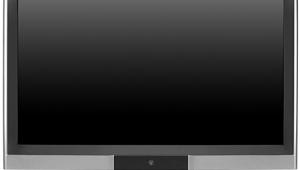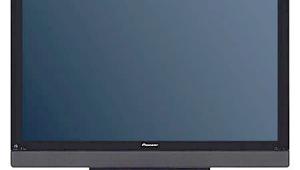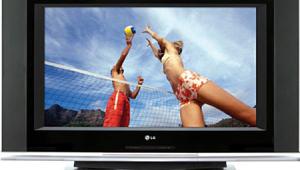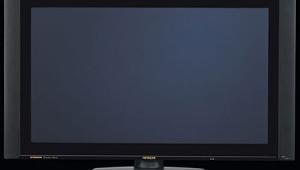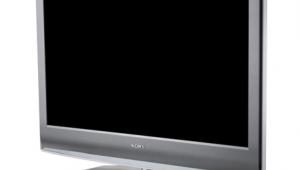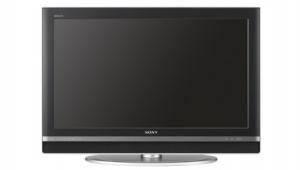Panasonic TH-50PHW3 & Pioneer PDP-5030HD Calibration
Panasonic TH-50PHW3: Jamie Wilson of Overture Ultimate Audio/Video calibrated the Panasonic first and found that if its Color Temperature control was set to Warm, the display's color temperature came comfortably close to the NTSC standard. It read 7000, just 500 kelvins above the NTSC standard of 6500K. As Wilson put it, "Take this out of the box and it will look pretty good."
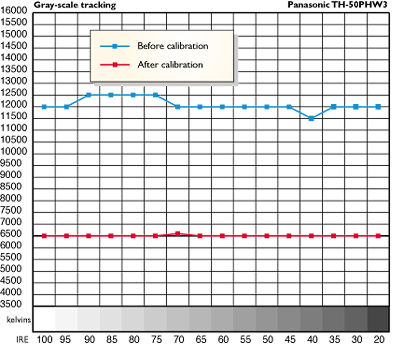
The menu system was good; the boxes fell away while adjustments were made and so did not interfere with test patterns. The video-adjustment scales were numbered; you can write them down and re-enter them if needed. And with this unit, that may very well be needed—it was easier than I would have liked to inadvertently reset the monitor to its factory defaults. Still, Wilson found that setting the proper color temperature was just a matter of touching things up, and he finished the job in no time.
Pioneer PDP-5030HD: The Pioneer came with its color temperature set closer to ideal. But adjusting the Color Temperature control did not bring readings to within striking distance of the NTSC standard, as it did with the Panasonic. Wilson managed to make the proper settings with no trouble, working from the service menu with a color analyzer, but he found that once the color temperature had been set in the service menu, adjusting the Contrast control altered the color temperature readings in a way he hadn't seen before.
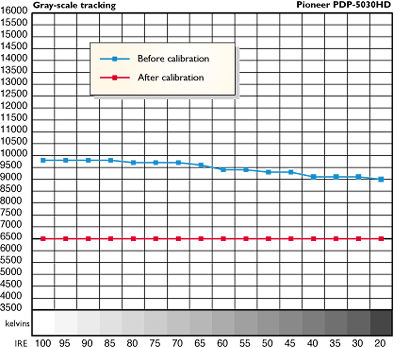
The Pioneer's video menus didn't fall away while adjustments were being made, but covered a quarter of the screen. That was inconvenient; but the adjustment scales were numbered, allowing you to write down the readings. And the Pioneer did not inadvertently default to its factory settings nearly as readily as the Panasonic. What's more, before returning to its defaults, the Pioneer asks you to confirm that that's what you want to do, which is thoughtful of it.
Both: As with many plasmas, setting the Sharpness control on both of these displays was no casual affair. On a CRT-based TV, the minimum Sharpness setting is, more often than not, the most accurate, with higher settings merely adding an artificial edginess. On the plasmas I've seen, this is not necessarily the case. (Ditto.—TJN) A plasma's Sharpness control does in fact regulate how sharp the picture is, and careful adjustment of the control will pay off in a crisp but not artificially enhanced image. Both sets exhibited a slight red push after Color and Tint were properly balanced, an common problem. Turning the Color control down a tad corrected that.
Both units allow you to make different picture settings for different inputs. The Pioneer also allows you to make service-menu color-temperature adjustments for each input.—JB
Note on the gray-scale curves shown here: Most ISF calibrators use a color analyzer, in this case made by Philips, to calibrate televisions. For reasons too involved to go into here, this device is precise only when used to measure CRT-based displays. With other technologies, such as plasmas, DLPs, and LCDs, it could be off by as much as several hundred Kelvins. The only sort of device that we know for certain is accurate on non-CRT devices is a Spectroradiometer such as the Photo Research PR-650 we use here in our L.A. office. For the record, the PR-650 was used on all the LCD and DLP displays we have tested and calibrated in Stereophile Guide to Home Theater in the past year, as well as on the following plasma reviews: the Sony PFM-42B1 (September 2001), the Marantz PD5010D (December 2001), and the Fujitsu PDS-5002 (February 2002).
But the Photo Research was not available to JB (who is located on the east coast) for this review. I recently compared the color-temperature numbers obtained from a Philips analyzer with those from our Photo Research on a different plasma display. The readings were far more similar than I anticipated. But that might not be true of plasma panels from all sources. We simply do not have enough data yet to know for certain. Thus this caveat: The numbers shown in the curves here do show us how linearly each device tracks the gray scale from the top to the bottom (the Philips will accurately tell us that much), but the absolute values may be off. But this will also be true of most field calibrations available to buyers; few, if any, calibrators will own a device like the Photo Research, which costs more than $15,000. And while there are affordable alternatives that are said to produce accurate plasma measurements, we have not yet verified this. It is significant, however, that JB had no post-calibration complaints about either the absolute color quality or the color balance of either plasma, short of a small red push. So the results obtained with the Philips were close enough to satisfy a reviewer accustomed to watching properly calibrated displays.—Thomas J. Norton
- Log in or register to post comments
